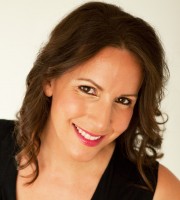
ANALYSIS: CRT permeates, informs and influences curricula and pedagogy
Imagine walking into a home and the powerful smell of cayenne pepper, cumin, garlic, paprika, oregano and onion smacks your senses. You don’t need a spoonful of chili in your mouth to know there’s a batch simmering on the stovetop. You smell it everywhere.
Similarly, you don’t need to see a textbook literally labeled “Critical Race Theory” to know it’s being taught in public K-12 schools.
In California, the Board of Education has approved the nation’s first statewide ethnic studies curriculum to teach public high school students about the oppression of people of color.
The Oregon Department of Education is training its K-12 teachers in “math equity” to combat “the toxic characteristics of white supremacy culture with respect to math.”
An elementary school in Philadelphia “forced fifth-grade students to celebrate ‘black communism’ and simulate a Black Power rally in honor of political radical Angela Davis.”
Public schools in Louisville, Kentucky, are hosting anti-bias and pro-equity teacher trainings to “eliminate curricular violence” in mathematics education.
Last fall, one Virginia school district spent $24,000 on Ibram Kendi books pushed as “required reading” for U.S. history classes.
A high school in Minnesota now begins all of its staff meetings with a commitment to dismantling “processes that benefit whiteness.”
In September, a high school in Washington canceled a 9/11 tribute because it could be seen as “racially insensitive.”
As of July 2020, a reported 4,500 schools across the nation have embedded the controversial New York Times 1619 Project curriculum into their classrooms.
It joins Howard Zinn’s “A People’s History of the United States,” often used as supplementary reading material in high school history classes that frames all of the nation’s history in CRT-inspired oppressor-oppressed rhetoric.
I still recall several years ago when I casually asked my then-high school son what he learned about in school that day and he told me without skipping a beat: “American imperialism.”
And on and on it goes. When pundits say “critical race theory” is not taught in schools, it’s true that there’s not an elective or a textbook labeled as such. But the concept and pedagogy is deeply embedded in our nation’s schools.
No parent is against teaching the warts and sins of our nation’s history, and any suggesting otherwise is patently false.
But the problem with CRT is it teaches that all white people are evil oppressors, divides students based on skin color, belittles and demeans students of color as incapable, and demands that the only solution is reverse discrimination and equity of outcomes.
SCOOP: At least 25 public school districts in 12 states are now teaching "Not My Idea," a book that claims "whiteness" is the devil, luring children with the promise of "stolen land [and] stolen riches."
Critical race theory is driving public education—and must be stopped. pic.twitter.com/FRzpxywwbj
— Christopher F. Rufo ⚔️ (@realchrisrufo) July 8, 2021
Obviously a class element here, since it applies only to parents who were able to work from home. But Zoom allowed parents to get a sense of…fashionable…curricular trends that wouldn't have been possible pre-2020.https://t.co/0PFMMZxWY3 pic.twitter.com/PHFz8g3Wh4
— KC Johnson (@kcjohnson9) November 1, 2021
“Within the last year, I was in one of my so-called equity trainings that White, Christian, able-bodied females currently have the power in our schools and ‘this has to change,’” Laura Morris famously said in August as she quit her job as a teacher in Loudoun County.
“School board, I quit,” she said. “I quit your policies, I quit your training, and I quit being a cog in a machine that tells me to push highly politicized agendas to our most vulnerable constituents – children.”
Even the National Education Association has admitted as much.
Over the summer it passed several pro-CRT resolutions, including one which calls for the union to support curricula that makes use of “academic frameworks for understanding and interpreting the impact of the past on current society, including critical race theory.”
Again, critical race theory is not, for an example, an elective offered in high school, so it’s easy for pundits to say “it’s not taught in schools.” But CRT permeates, informs and influences curricula and pedagogy.
A recent piece in National Review spells out this concept further:
Deniers are correct in one narrow sense: Few if any students read the scholarly texts of Kimberlé Crenshaw or Richard Delgado in their classes. But even so, the language, the theory, the application, the ideas, the instructional practices, the arguments, and the policies of these scholars permeate almost every sphere of K–12 education. To draw from Plato’s Allegory of the Cave: CRT is the light that casts the shadows on the wall, even if those looking at it are unaware of the source.
The examples are everywhere and will continue to be exposed, anecdote after anecdote. Thankfully, it seems parents have finally had enough.
MORE: Parents’ concern over critical race theory major factor in GOP election victories
IMAGE: Syda Productions / Shutterstock






Please join the conversation about our stories on Facebook, Twitter, Instagram, Reddit, MeWe, Rumble, Gab, Minds and Gettr.